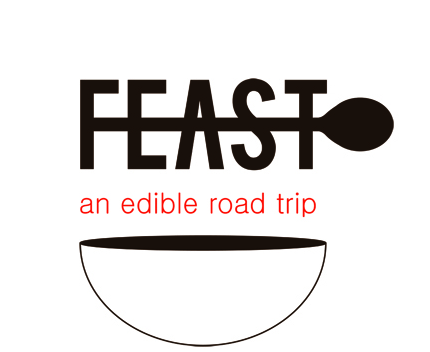The Tablelands & Bakeapples
All good Canadian road trips must stray from the Trans-Canada every now and then; we decided ours should take a detour to Gros Morne National Park on our way from Cornerbrook to Twillingate, and rewarded we were!
There is so much to see in the park, but since we’d never seen the earth’s mantle, we decided on the Tablelands.
Driving through the park, you can note a sudden change in landscape near Woody Point. We didn’t have solid directions to the Tablelands, but people kept saying, “You’ll know when you get there.” Even though we’d been surrounded by dense Boreal forest for several kilometres and were fearful we’d be too daft to just ‘know,’ we were relieved when the landscape did quite suddenly became moon-like (I know this because I’ve been to the moon). A vast stretch of rust-coloured rocky mountains and shrubby plants emerged before us.
High five! We found them!
The Tablelands are the result of an unusual geological occurrence of drastically shifting plates that forced the depths of the Earth’s mantle to the surface. The rocks are primarily made of peridotite, a type of rock that lacks the nutrient content required for most modern plant life (the moon can’t sustain modern plant life either). Apparently, clearing the weathered rusty surface reveals a dark green rock. My knowledge of geology is miniscule, but I’m pretty amazed.
It really is an unbelievable place to see, and very different from the rest of Newfoundland’s landscape. There is a short hike to the main valley, longer hikes further in, and interpretive tours in the summer. Stick to the trail to preserve the existence of the rare plants that do grow on the rock!
I want to drive every road in Newfoundland now.
Seeing the unique landscape was certainly worth the detour, because not only did we get to tromp around on the earth’s mantle without any digging, but we also got to stop at the Cormack Farmers’ Market for road trip snacks.
It felt like a miniature version of the Newfoundland Emporium, but with an abundance of local produce and preserves. We found bakeapple syrup and jam; remember those elusive orange berries we went searching for in the Yukon? They grow in Newfoundland too, but they’re easier to find and are called bakeapples instead of ‘cloudberries.’
Like many other words, bakeapple is distinct to the Newfoundland dialect; the word was Anglicized over time from the French phrase “baie qu’appelle,” which means “What berry is this?” Here is a great article that summarizes several other Newfoundland linguistic anomalies.
We finished off the rest of April’s biscuits with the fresh local cream and bakeapple jam we bought at the market.
Are cream, jam, and scones not your typical road trip food? Maybe it’s time to try something new…
-DV
